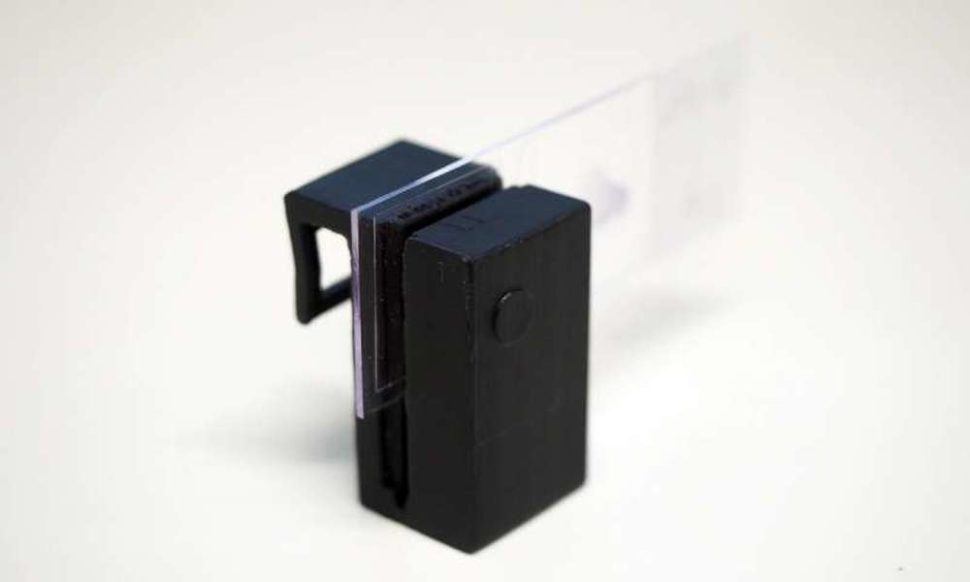Researchers have created a clip-on that will make any smartphone a fully-functional microscope.
Australian researchers have reportedly developed a 3D-printed clip-on that could revolutionize the optical capabilities of smartphones. The accessory can supposedly turn a mobile device’s camera into a fully-functional microscope. This microscope can be used to view blood cells, organisms, plant cells, and other objects as tiny as 1/200th of a millimeter.
The clip-on microscope, which was made by researchers from the ARC Centre of Excellence for Nanoscale BioPhotonics at the University of Adelaide in Australia, reportedly requires no external power or light source to work. The device is said to offer high-powered microscopic performance “in a robust and mobile handheld package.”
Researchers from the ARC Centre of Excellence for Nanoscale BioPhotonics of the University of Adelaide developed a clip-on that could turn smartphones into microscopes. @CNBPScience @UniofAdelaideClick To TweetAccording to Dr. Anthony Orth, lead developer of the clip-on device, it uses internal illumination tunnels that utilize the light coming from the camera flash to illuminate the sample from behind.
“Ideally, a phone microscope should take advantage of the integrated flash found in nearly every modern mobile, avoiding the need for external lighting and power. It should also be as compact and easy to assemble as possible. It is this design philosophy that inspired us in the development of this add-on clip,” he said.
Read More: New Hyperlens Crystal can View Ultra Small Cells in Details
Turning Smartphone to Microscope with a Clip-On
The internal illumination feature is said to be what makes the clip-on microscope way better than other smartphone-based microscopes. This is largely due to the fact that other products rely on external LEDs and other bulkier or difficult to assemble power sources.
“We have designed a simple mobile phone microscope that takes advantage of the integrated illumination available with nearly all smartphone cameras,” Dr. Orth said. “Our mobile microscope can be used as an inexpensive and portable tool for all types of onsite or remote-area monitoring.”
Dr. Orth firmly believes that their technology has the potential to be a scientific tool that could be used in remote areas and other places where larger standalone microscopes are not available.
“We’ve designed a simple mobile phone microscope that takes advantage of the integrated illumination available with nearly all smartphone cameras.” -Dr. Antony Orth
According to reports, the Australian researchers are not keeping their clip-on technology to themselves.
The 3D printing files of the new technology have been shared freely with the public so both scientists and regular people can experience turning their phones into microscopes.
The clip-on microscope requires a 3D printer to be assembled. With its dark-field microscopy functionality, users would be able to observe samples that are almost invisible under normal bright-field operation.
“The added dark-field functionality lets us observe samples that are nearly invisible under conventional bright-field operation such as cells in media,” Dr. Orth explained. “Having both capabilities in such a small device is extremely beneficial and increases the range of activity that the microscope can be successfully used for.”
This is not the first time that researchers have tried to turn smartphones into microscopes. Back in 2016, Italian startup Smart Micro Optics introduced the Blips lense that could transform a mobile phone’s camera into a digital microscope for only $17.
Dr. Orth and his team’s research has been published in the journal Scientific Reports and the 3D printing files for the clip-on microscope can be downloaded here.











Comments (0)
Most Recent